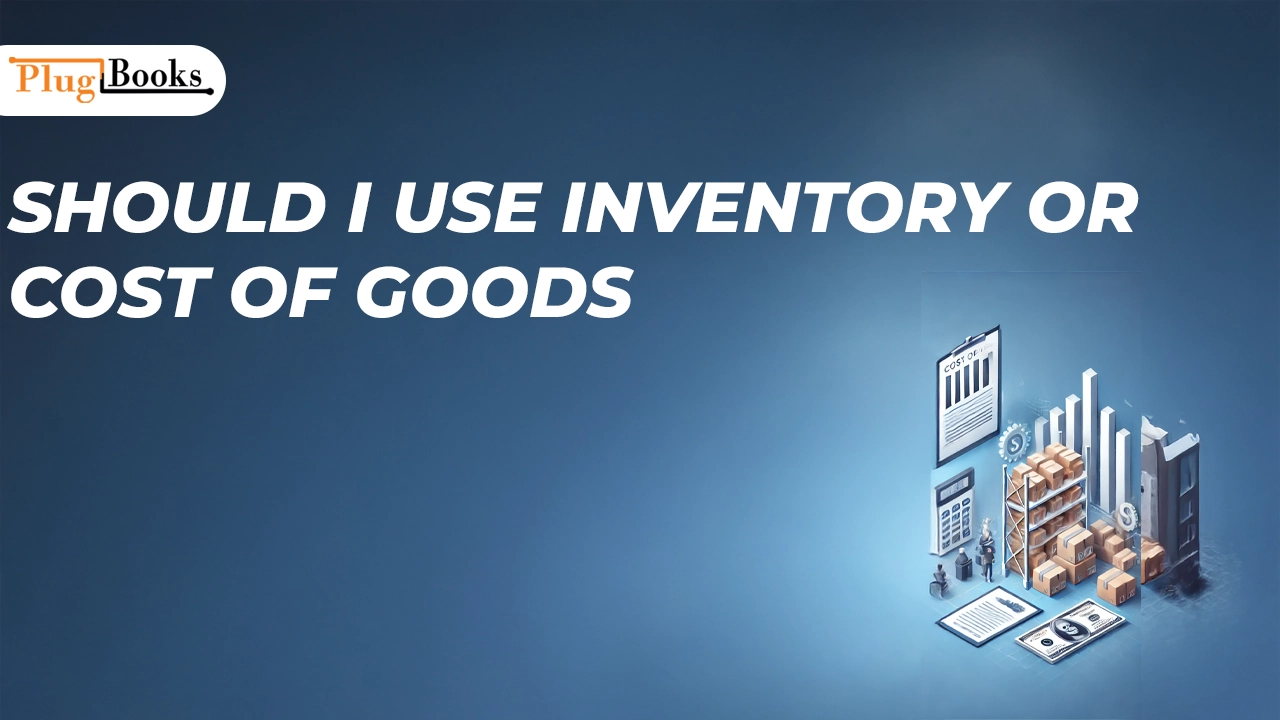You’re not alone if you own a business and are debating whether to utilize cost of goods or inventory for your financial reporting. A typical issue, “should I use inventory or cost of goods” might lead to uncertainty particularly if you are new to accounting or financial management.
The good news is that while they have diverse uses, both phrases are very vital for your financial accounts. Accurate financial reporting and wise decision-making depend on your knowing when and why you should apply one over the other.
We will discuss in this post the main variations between inventory and cost of goods sold (COGS), how they affect your company, and how best to choose which approach fits your circumstances. Let us start right now.
What Is Inventory?
In the context of business, inventory is the collection of objects owned by a company at any one time. This covers raw supplies, work-in-progress projects, and completed goods fit for retail. It’s seen as a benefit as it shows items with possible income producing capacity.
When wondering “Should I use inventory or cost of goods?” keep in mind that tracking stock levels, controlling supply chains, and knowing the whole worth of your business depend on inventory. Your balance sheet notes inventory as an asset.
Main forms of inventory are two:
Raw materials are the fundamental elements applied in production.
Products classified as finished goods are ones ready for consumer sale.
What Is the Cost of Goods Sold (COGS)?
On the other hand, cost of goods sold (COGS) is the direct cost of manufacturing or procuring the commodities sold during a certain period. Along with labor and raw materials, COGS includes overhead directly tied to manufacturing. Determining the success of your company depends heavily on COGS when you question “Should I use inventory or cost of goods?”
Unlike inventory, COGS appears on your income statement and immediately influences your gross profit. The higher your COGS, the lower your profit margin will be. Understanding the actual cost of running your company and evaluating your product acquisition or production efficiency depends on precisely tracking COGS. For a deeper understanding of how COGS impacts your finances, check out this guide to COGS by Investopedia.

Should I Use Inventory or Cost of Goods?
Knowing what each phrase means now, let’s address the fundamental question: “Should I use inventory or cost of goods?” The response relies on the situation in which you are deciding.
1. Use Inventory for Valuation and Asset Management
If you wish to assess your company’s current stock levels, value your assets, or find out how much inventory you have available for sale, inventory is the easiest way to go about this. Should you be wondering “Should I use inventory or cost of goods?” inventory becomes vital for tracking stock, controlling supply chains, and evaluating asset worth at any one moment.
Monitoring your inventory will guide your buying decisions, prevent understocking or overstocking, and better predict cash flow needs. Particularly for companies that produce or market tangible goods, operational performance depends much on appropriate inventory control.
Effective inventory control helps to guarantee better operations and prevents disturbance of your company’s flow.
2. Apply profitability analysis using the cost of goods sold.
COGS is your focus whether your objective is to assess your profitability, ascertain the cost of manufacturing the items you have sold, or figure your gross profit margin. COGS immediately affects your financial situation as it clarifies your relative product production or acquisition efficiency against income.
If your COGS is excessively high, for example, you may be overspending on manufacturing or material procurement, therefore compromising your profitability. Examining COGS lets you make tweaks meant to increase your margins.
3. COGS and Inventory Together
Inventory and COGS cooperate to provide a whole picture of the financial situation of your company, so rather than choose one over the other.
For instance, usually when you figure COGS, you apply the formula COGS=Beginning. Beginning Inventory + Purchases during the Period−Ending Inventory\text{COGS} = \text{Beginning Inventory} + \text{Purchases during the period} – \text{Ending Inventory}COGS=Beginning Inventory+Purchases over the period−Ending Inventory
This method reveals how variations in inventory levels affect your cost structure. You still have to precisely monitor your inventory even if your main focus is on COGS for profitability analysis.

When Should I Focus on Inventory vs. Cost of Goods?
- Apply Inventory Monitoring your stock levels can help you to ensure that you have plenty of products for sale.
- Valuing your company or creating balance sheets calls on you to do.
- Optimizing the supply chain is trying to lower stock outs or surplus of goods.
- Use COGS when:
- Assessing profitability: You want to know how much it costs to make or acquire the goods you market.
- Working on your income statement, you must figure out how much profit you are earning following manufacturing expenses using gross profit analysis.
- Financial forecasting calls on you to project your margins and cost structure.
For more insights on how inventory and COGS impact your eCommerce business, check out this guide on inventory and COGS by Jungle Scout
How PlugBooks Helps with Inventory and COGS Management
Although controlling cost of goods sold (COGS) and inventory can be difficult, PlugBooks streamlines the process with simple-to-use accounting tools. PlugBooks provides real-time insights and automatic calculations to help you keep your finances in order whether you are computing COGS or managing inventories.
Important characteristics of plugbooks:
- Track stock levels and easily handle orders to practice inventory management.
- Calculating COGS automatically: Get correct COGS numbers without much work.
- Create financial reports to monitor activity and direct choices.
Managing inventory and COGS is simple with PlugBooks, which will free you to concentrate on expansion of your company.
Conclusion:
Should I use inventory or cost of goods” is ultimately not a yes-or-no question. For running your company, both are absolutely essential. While COGS concentrates on manufacturing costs and profitability, inventory aids with tracking of assets and stocks. Both correctly guarantee flawless operations and precise financial reporting. Tools like PlugBooks allow you to easily keep on top of your money by streamlining handling both.




